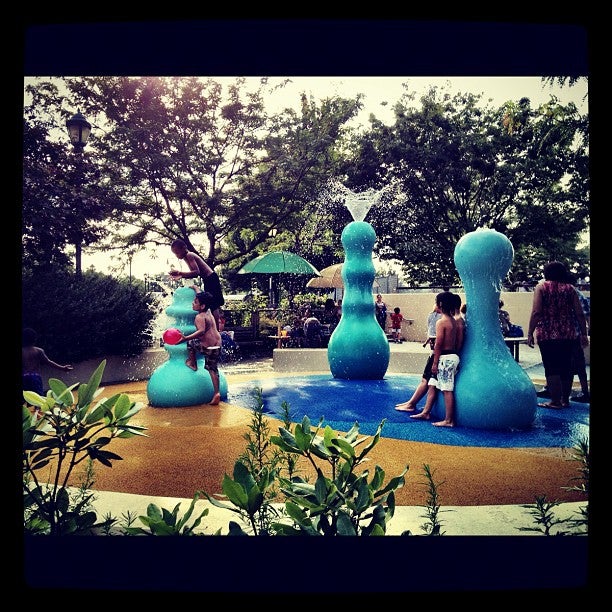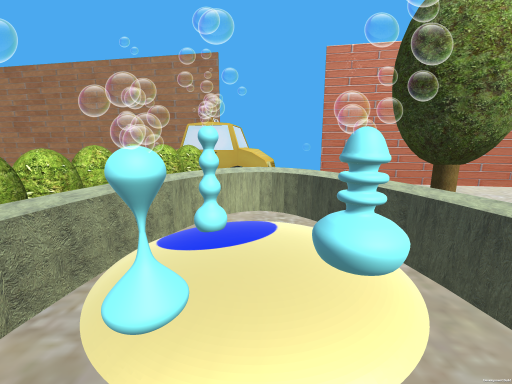Stephen Hoban
Game developer
Personal
Chelsea Waterside
It’s a common wisdom that the reason extended reality hasn’t taken off more is because it doesn’t have its killer app yet. I created Chelsea Waterside to test a hunch that personal memory is the compelling use case augmented reality is waiting for. AR has the potential to be what spectral photography was at the dawn of the camera. Both the film camera and the mobile phone are tools that can help us see ghosts.
This project is a version of a 3D mobile game I had built in Unity and Blender for my son Heath a few years ago. Heath is autistic, and since he was old enough to walk, Chelsea Waterside was his favorite playground in New York City. In the summer, its three enormous water fountains would entertain him for hours on end. All winter long he would draw pictures of them, with little magical additions he imagined, as we waited for summer to return.
 Image: Mary-Majella O., via FourSquare
Image: Mary-Majella O., via FourSquare
Designed by a prominent landscape architect from a plan selected in a city sponsored competition, Chelsea Waterside’s fountains, with their Seussian forms, were a cringeworthy fixture for neighborhood parents but a hit with children. In the spring of 2018, public pressure won out and the playground was torn down and renovated. To be honest, the playground that would replace it was undeniably superior in every last respect. But still, it wasn’t the old Chelsea Waterside. My son’s favorite water fountains were gone forever.

Heath is also a prodigy at iPad games, and we’ve shared nice moments playing games together . I put Chelsea Waterside’s three water fountains into a game to help him say goodbye to a place that was so special to him. It’s a stim, but for us it’s also a conjuring, a way to revisit the spirit of a place we still haven’t forgotten.
Project dates: 2018; 2023
iOS private beta
GitHub respository